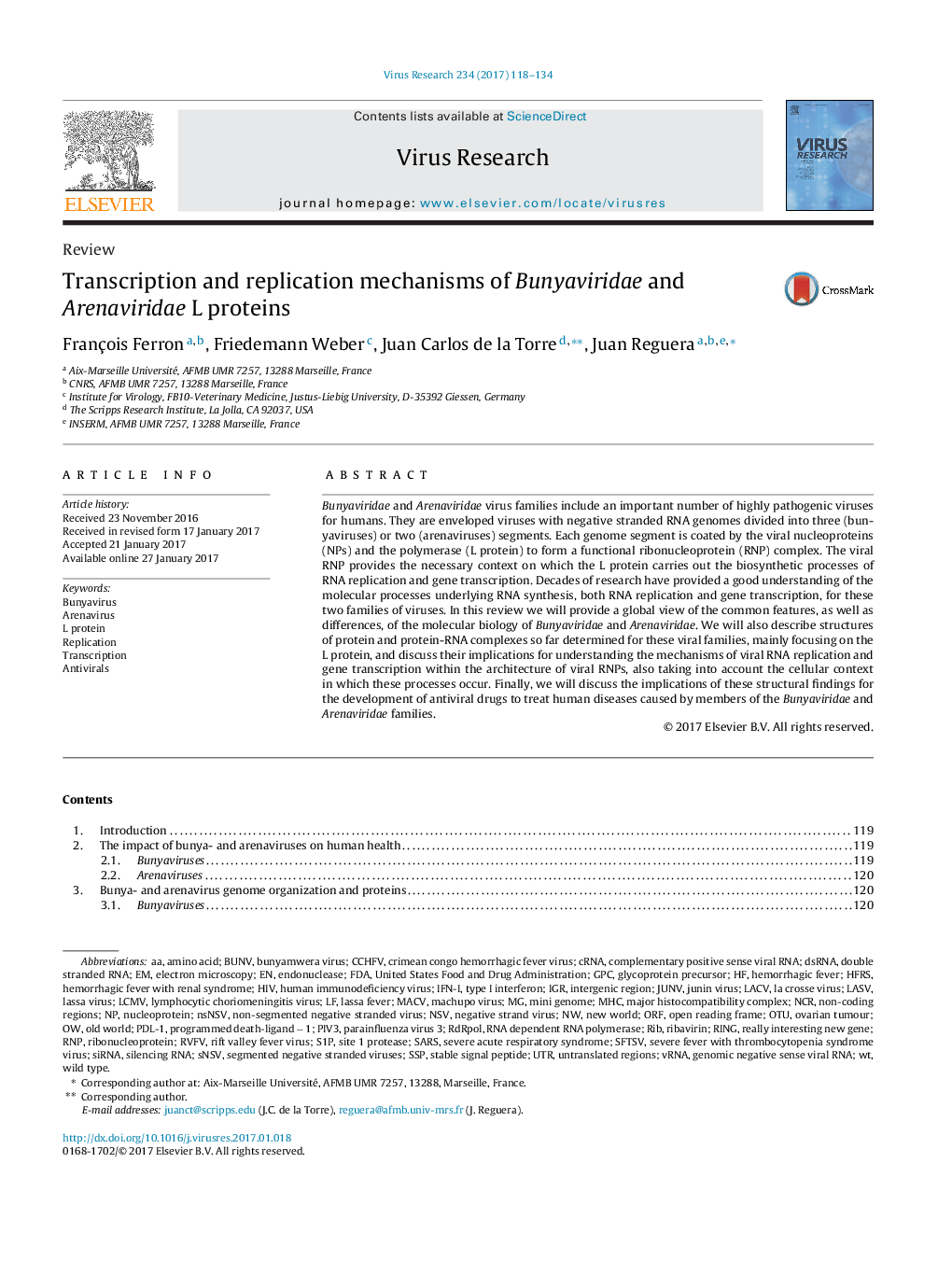| Article ID | Journal | Published Year | Pages | File Type |
|---|---|---|---|---|
| 5675405 | Virus Research | 2017 | 17 Pages |
â¢Bunyavirus and arenavirus are important public health threats.â¢Bunyavirus and arenavirus molecular biology, common and differential features.â¢Implications of LACV L protein structure for understanding viral RNA synthesis.â¢Current state and future perspectives on bunya- and arenavirus antivirals.
Bunyaviridae and Arenaviridae virus families include an important number of highly pathogenic viruses for humans. They are enveloped viruses with negative stranded RNA genomes divided into three (bunyaviruses) or two (arenaviruses) segments. Each genome segment is coated by the viral nucleoproteins (NPs) and the polymerase (L protein) to form a functional ribonucleoprotein (RNP) complex. The viral RNP provides the necessary context on which the L protein carries out the biosynthetic processes of RNA replication and gene transcription. Decades of research have provided a good understanding of the molecular processes underlying RNA synthesis, both RNA replication and gene transcription, for these two families of viruses. In this review we will provide a global view of the common features, as well as differences, of the molecular biology of Bunyaviridae and Arenaviridae. We will also describe structures of protein and protein-RNA complexes so far determined for these viral families, mainly focusing on the L protein, and discuss their implications for understanding the mechanisms of viral RNA replication and gene transcription within the architecture of viral RNPs, also taking into account the cellular context in which these processes occur. Finally, we will discuss the implications of these structural findings for the development of antiviral drugs to treat human diseases caused by members of the Bunyaviridae and Arenaviridae families.
